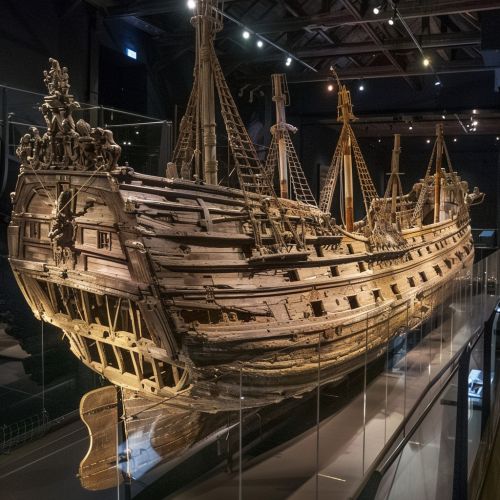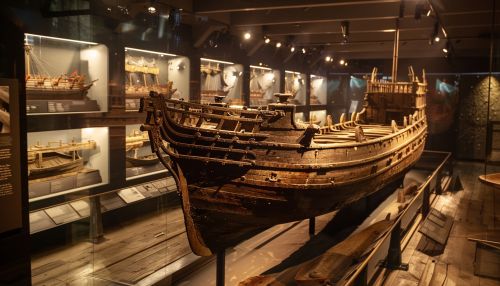History of the Royal Navy
The history of the Royal Navy, the naval warfare force of the United Kingdom, is a storied and intricate narrative that spans centuries. This article delves into the evolution, significant events, and technological advancements of the Royal Navy, providing an expert-level understanding of its development.
Early Origins
The origins of the Royal Navy can be traced back to the medieval period. The Anglo-Saxon kings maintained fleets to protect their shores from Viking raids. However, it was during the reign of Alfred the Great in the 9th century that a more organized naval force began to take shape. Alfred is often credited with establishing the first English navy, constructing a fleet of ships to defend against Danish invaders.
The Tudor period marked significant advancements in naval capabilities. Under Henry VIII, the navy expanded considerably, with the construction of larger and more heavily armed ships. The establishment of the Royal Dockyards at Portsmouth and Deptford facilitated this growth. The most famous ship of this era, the Mary Rose, exemplified the technological innovations of the time, including the use of heavy cannons mounted on ships.


The reign of Elizabeth I saw the Royal Navy become a dominant force. The defeat of the Spanish Armada in 1588 was a pivotal moment, showcasing the tactical prowess and superior seamanship of the English fleet. This victory not only secured England's maritime dominance but also marked the beginning of the Royal Navy's rise as a global power.
The 17th Century and the Anglo-Dutch Wars
The 17th century was characterized by the Anglo-Dutch Wars, a series of conflicts between England and the Dutch Republic. These wars were driven by commercial rivalry and control of trade routes. The Royal Navy played a crucial role in these conflicts, with notable battles such as the Battle of Lowestoft and the Four Days' Battle. The introduction of the line of battle tactic during this period revolutionized naval warfare, emphasizing the importance of ship formation and coordinated broadsides.
The 18th Century and the Age of Sail
The 18th century, often referred to as the Age of Sail, was a period of significant expansion and consolidation for the Royal Navy. The Seven Years' War (1756-1763) and the American Revolutionary War (1775-1783) saw the Royal Navy engaged in extensive naval campaigns. The Battle of Quiberon Bay and the Battle of the Chesapeake were key engagements that demonstrated the strategic importance of naval power.
The Royal Navy also played a crucial role in the suppression of the Atlantic slave trade, patrolling the West African coast and intercepting slave ships. The establishment of the West Africa Squadron in 1808 was a testament to the navy's commitment to this cause.
The Napoleonic Wars
The Napoleonic Wars (1803-1815) were a defining period for the Royal Navy. The Battle of Trafalgar in 1805, under the command of Admiral Horatio Nelson, was a decisive victory that cemented British naval supremacy. Nelson's innovative tactics and the superior training of British sailors were instrumental in defeating the combined French and Spanish fleets.
The Royal Navy's dominance during this period ensured the security of British trade routes and colonies, contributing to the economic and political stability of the British Empire.
The 19th Century and Technological Advancements
The 19th century witnessed significant technological advancements in naval warfare. The transition from sail to steam power revolutionized naval operations. The launch of HMS Warrior in 1860, the first iron-hulled warship, marked a new era in naval engineering. The development of breech-loading and rifled artillery further enhanced the firepower and accuracy of naval guns.
The Royal Navy also played a key role in the Crimean War (1853-1856), with the Battle of Sinop and the Siege of Sevastopol highlighting the effectiveness of modern naval artillery and steam-powered ships.
The Early 20th Century and World War I
The early 20th century saw the Royal Navy continue to innovate and expand. The launch of HMS Dreadnought in 1906 revolutionized naval warfare, rendering previous battleship designs obsolete. The Dreadnought class ships were faster, more heavily armed, and better protected than their predecessors, leading to a naval arms race among the world's great powers.
During World War I, the Royal Navy played a crucial role in maintaining the blockade of Germany, which significantly weakened the German economy and war effort. The Battle of Jutland in 1916 was the largest naval battle of the war, involving a clash between the British Grand Fleet and the German High Seas Fleet. Although the battle was inconclusive, it demonstrated the strategic importance of naval power in modern warfare.
World War II
World War II further underscored the strategic significance of the Royal Navy. The Battle of the Atlantic was a prolonged campaign to secure vital supply routes between North America and Europe. The Royal Navy's efforts to counter the German U-boat threat were critical to the Allied war effort.
The Royal Navy also played a key role in several major amphibious operations, including the Dunkirk evacuation in 1940 and the Normandy landings in 1944. The use of aircraft carriers and naval aviation became increasingly important, with the Fleet Air Arm providing crucial air support during these operations.
The Cold War Era
The post-World War II period saw the Royal Navy adapt to the changing geopolitical landscape of the Cold War. The development of nuclear submarines and the acquisition of ballistic missile capabilities were key components of the United Kingdom's nuclear deterrent strategy. The launch of HMS Resolution in 1966 marked the beginning of the Royal Navy's Polaris submarine program.
The Royal Navy also played a significant role in various conflicts and crises during the Cold War, including the Falklands War in 1982. The successful recapture of the Falkland Islands from Argentine forces demonstrated the Royal Navy's ability to project power and conduct complex naval operations.
In the 21st century, the Royal Navy continues to evolve, focusing on modernizing its fleet and enhancing its capabilities. The introduction of the Queen Elizabeth-class aircraft carriers, HMS Queen Elizabeth and HMS Prince of Wales, represents a significant investment in naval aviation and power projection.
The Royal Navy also plays a crucial role in international security and humanitarian missions, participating in anti-piracy operations, disaster relief efforts, and multinational naval exercises. The emphasis on littoral warfare, cybersecurity, and unmanned systems reflects the changing nature of naval warfare in the modern era.
